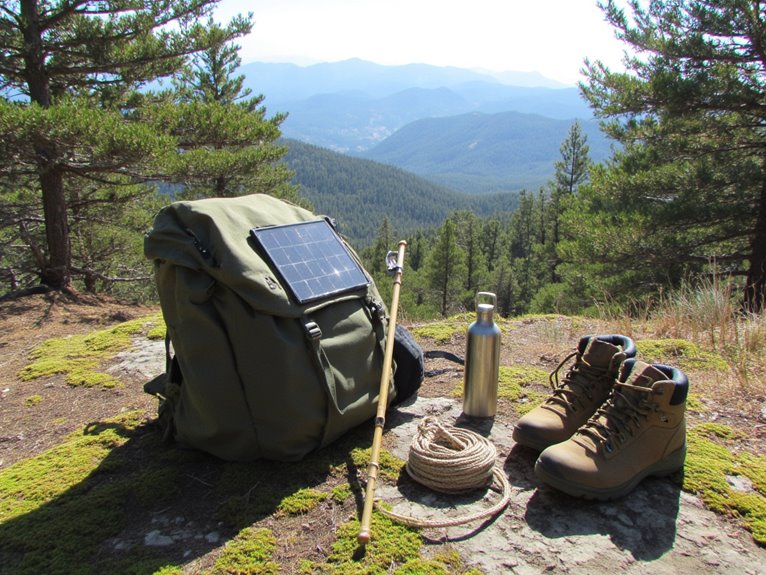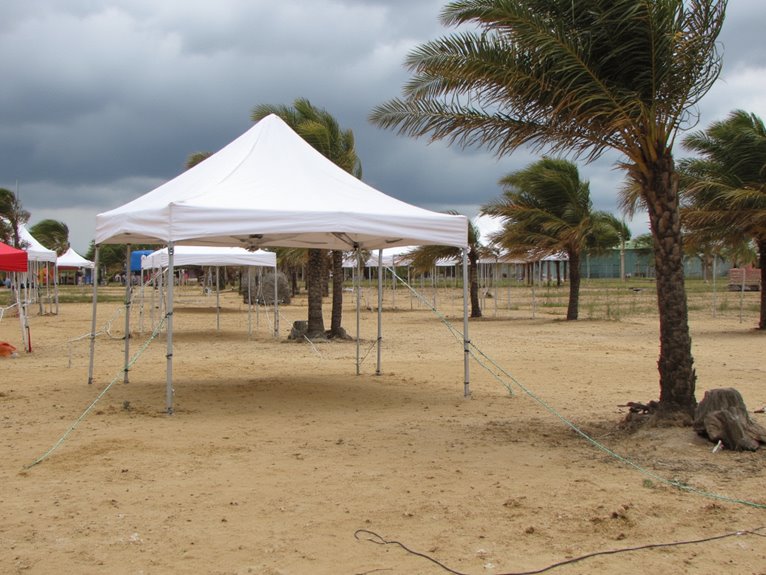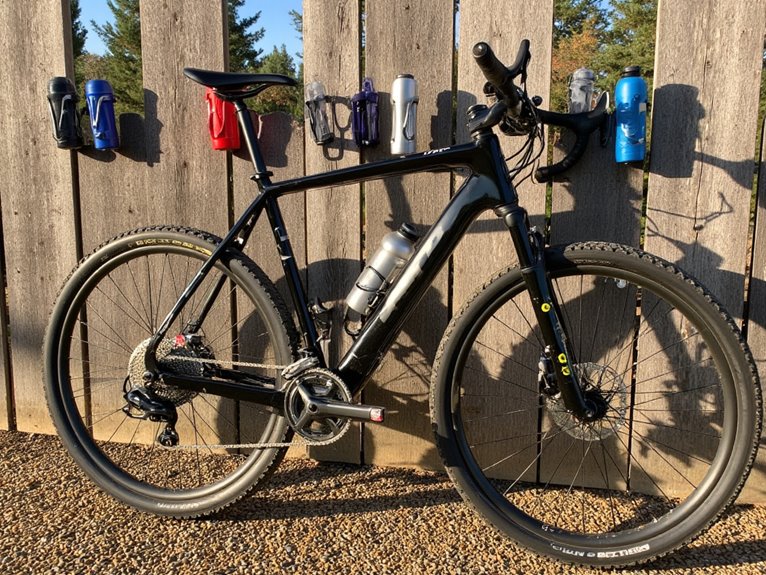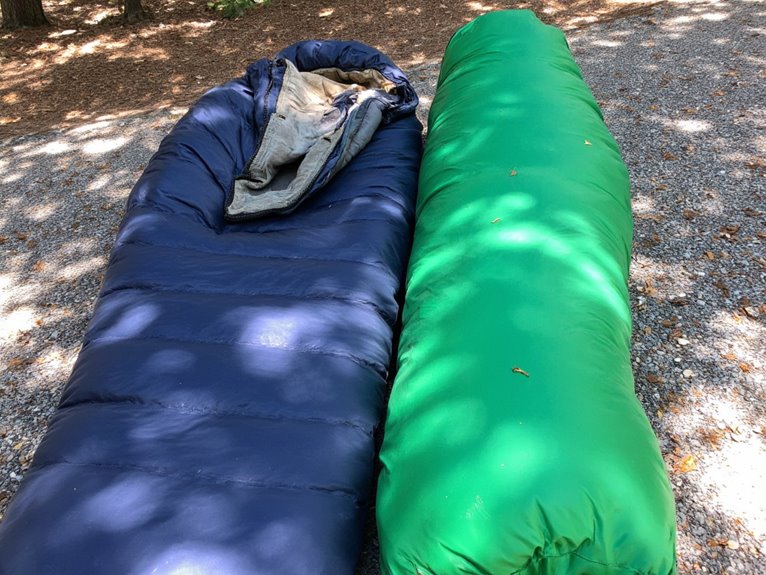Is a Bivvy Bag a Survival Bag?
A bivvy bag is a type of survival bag, designed to provide minimal shelter and protection from the elements in outdoor environments. It is a portable, lightweight sleeping enclosure that serves as a barrier against wind, rain, and cold temperatures, ensuring a dry and relatively comfortable night's sleep. While sharing similarities with other survival gear, such as emergency blankets, bivvy bags have distinct features and purposes. To better understand the nuances of bivvy bags and their role in survival situations, it's essential to examine their design, materials, and functionality, which reveals their unique value in outdoor emergency preparedness.
We are supported by our audience. When you purchase through links on our site, we may earn an affiliate commission, at no extra cost for you. Learn more. Last update on 26th December 2025 / Images from Amazon Product Advertising API.
Defining the Bivvy Bag
A bivvy bag, also known as a bivvy sack or bivi, is a type of portable, lightweight sleeping enclosure designed to provide minimal shelter and protection from the elements in outdoor environments.
This compact and versatile shelter option is ideal for outdoor enthusiasts, such as backpackers, hikers, and adventure seekers.
The bivvy bag is designed to be carried with ease, allowing users to set up a makeshift shelter in remote or emergency situations.
Its primary function is to provide a barrier against wind, rain, and cold temperatures, ensuring a dry and relatively comfortable night's sleep.
Characteristics of a Survival Bag
In addition to providing a barrier against the elements, a well-designed bivvy bag also incorporates specific characteristics that improve its functionality as a survival tool.
These characteristics include a compact and lightweight design, making it easy to carry and store.
The material used is often waterproof and breathable, ensuring the user remains dry and comfortable.
Additionally, a good survival bag will have a durable and tear-resistant construction, with reinforced seams and stress points to withstand harsh environments.
Some models may also feature reflective materials or bright colors to increase visibility, while others may have built-in features such as emergency whistles or storage pockets.
These characteristics combine to create a reliable and effective survival tool.
Overlapping Features and Purposes
Several bivvy bags overlap in their features and purposes with other types of survival gear, such as emergency blankets and space blankets.
These similarities arise from their shared goal of providing warmth and protection in emergency situations.
Like bivvy bags, emergency blankets and space blankets are designed to retain body heat, shield from wind and rain, and provide a layer of insulation.
They often share similar materials, such as aluminized Mylar or reflective coatings, which amplify their heat-reflective properties.
Additionally, both bivvy bags and these other types of survival gear are often compact, lightweight, and portable, making them easy to carry in emergency kits or backpacks.
This overlap highlights the versatility and adaptability of these survival tools.
Key Differences in Design
In terms of bivvy bags, design differences play a vital role in determining their performance and functionality.
Two key aspects that set them apart are material thickness and water resistance features, which substantially impact their ability to provide shelter and protection in various environments.
Understanding these differences is essential to selecting the right bivvy bag for specific outdoor activities and conditions.
Material Thickness Matters
Material thickness is a critical factor in bivvy bag design, as it directly impacts the bag's warmth, durability, and overall performance.
Thicker materials generally provide better insulation and increased durability, but also increase the bag's weight and packed size.
Conversely, thinner materials may sacrifice warmth and durability for reduced weight and bulk.
The ideal material thickness depends on the intended use and environment of the bivvy bag.
For example, a thicker material may be suitable for extreme cold-weather conditions, while a thinner material may be sufficient for milder climates.
Manufacturers often strike a balance between these factors to create a bivvy bag that meets the needs of its intended users.
Water Resistance Features
In addition to material thickness, a bivvy bag's water resistance features play a critical role in protecting users from the elements, with design variations substantially impacting the bag's overall performance in wet conditions.
A bag's water resistance is determined by its coating, membrane, and seam construction.
Coatings include hydrophobic treatments, silicone, or polyurethane-based coatings.
Membranes include Gore-Tex, eVent, or similar technology.
Seam construction involves taped, welded, or sealed seams.
Additionally, water-resistant zippers or storm flaps contribute to a bag's water resistance.
Some bivvy bags also feature hydrophobic fabrics or DWR (durable water repellent) finishes.
Shelter Versus Comprehensive Kit
Opting for a bivvy bag as a shelter solution often requires a critical decision between prioritizing lightweight simplicity and carrying an extensive kit that can adapt to diverse environmental conditions.
A bivvy bag's primary function is to provide a waterproof and windproof shelter, but it may not offer the same level of comfort and versatility as a tent.
On the other hand, an exhaustive kit may include additional items such as a sleeping bag, pad, and stove, which can improve overall comfort and survival capabilities. However, this approach comes with the cost of increased weight and bulk.
Alternatively, one could opt to plunge into the wilderness with a minimalist bivvy bag, relying on its simplicity and lightness.
Ultimately, the choice between a lightweight bivvy bag and an extensive kit depends on the individual's specific needs, goals, and environmental expectations.
A careful assessment of these factors is essential to making an informed decision.
When to Choose a Bivvy Bag
When venturing into regions with mild weather conditions or requiring rapid deployment, a bivvy bag proves an ideal shelter solution.
It provides a lightweight and compact option for outdoor enthusiasts and military personnel alike.
In situations where speed and mobility are vital, bivvy bags offer a quick and effective way to establish a shelter.
Some scenarios where a bivvy bag is the preferred choice include:
- Fast-paced military operations
- Ultralight backpacking trips
- Emergency response situations
- Short-term reconnaissance missions
- Wilderness adventures with unpredictable weather
Survival Situations and Kit Choices
When confronted with a survival situation, selecting the appropriate kit is vital to staying safe and warm.
A bivvy bag's role in emergency shelter options cannot be overstated, particularly when considering pack weight constraints.
Emergency Shelter Options
In survival situations, having a reliable emergency shelter option can mean the difference between life and death, making it a crucial component of any well-stocked survival kit.
A suitable shelter provides protection from harsh weather conditions, wildlife, and other environmental hazards.
When selecting an emergency shelter, consider the following essential features:
- Water resistance and breathability
- Wind and rain resistance
- Compact and lightweight design
- Easy setup and takedown
- Durability and reliability
These key characteristics ensure a shelter can withstand harsh conditions and provide a safe haven in emergency situations.
Pack Weight Considerations
Every ounce of weight in a survival kit is a critical consideration, as excessive pack weight can quickly become a liability in emergency situations.
When every minute counts, carrying unnecessary weight can hinder mobility, increase fatigue, and reduce response time.
In survival situations, it's essential to strike a balance between packing essential gear and minimizing weight.
A bivvy bag, being an ultra-lightweight shelter option, can greatly reduce pack weight while still providing adequate protection from the elements.
Climate Adaptability Features
A bivvy bag's ability to adapt to varied climate conditions is a vital aspect of its design, as it enables users to survive in diverse environments and temperatures. A good bivvy bag should be able to regulate body heat, protect from wind and rain, and provide adequate insulation in extreme cold or hot conditions.
Some key climate adaptability features to examine include:
- Breathable and moisture-wicking materials to prevent overheating and moisture buildup
- Wind and rain-resistant outer shells to protect from harsh weather conditions
- Insulation types and thickness tailored to specific temperature ranges
- Adjustable ventilation systems for temperature regulation
- Water-resistant treatments and coatings to prevent water ingress




